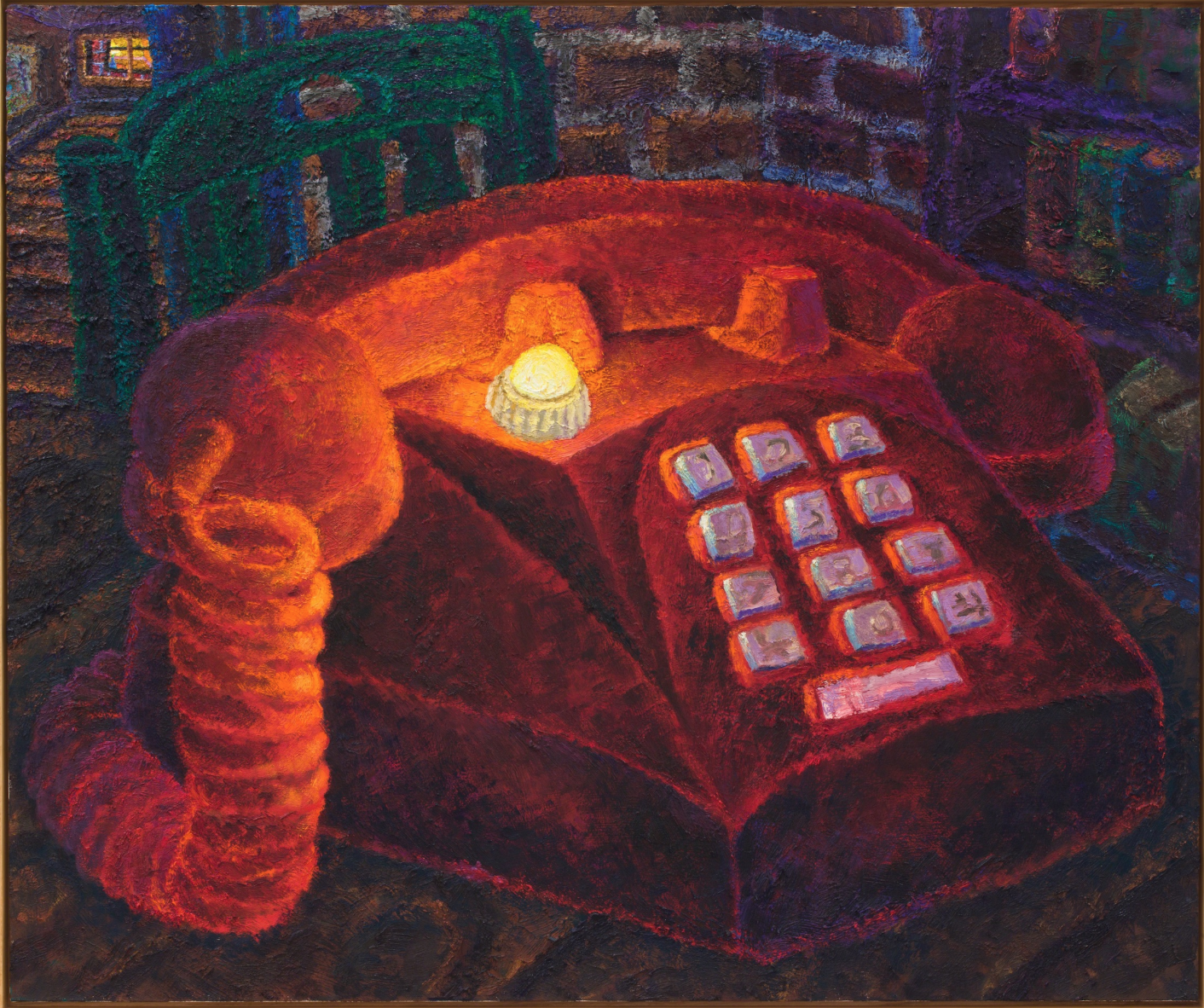Whitney Biennial 2019 | Art & Artists
May 17–Oct 27, 2019
Whitney Biennial 2019 | Art & Artists
Keegan Monaghan
51
Floor 5
Born 1986 in Evanston, IL
Lives in Brooklyn, NY
With their tactile, heavily worked surfaces, glowing light sources, and emphasis on subjective points of view, Keegan Monaghan’s paintings channel aspects of Impressionist painting, but they are very much of today’s image-centric world. Monaghan employs visual tricks to make small items appear disproportionately large, skewing our perspective. The enormously clunky telephone in Incoming, for example, appears within a tightly cropped space, dwarfing the chair behind it. Other paintings play with a sense of inclusion and exclusion, positioning the viewer as a voyeur peering on to a scene through a peephole or fence. It is not always clear in Monaghan’s work whether the viewer is looking out or looking in, excluded or implicated.
Incoming, 2016-17
-
0:00
Keegan Monaghan
0:00
Keegan Monaghan: For me, the phone is something I wanted to paint because it's very familiar.
Narrator: Keegan Monaghan discusses Incoming, a painting of a large red telephone.
Keegan Monaghan: It was an image that can be innocuous and somehow light, while also being dark and imposing.
This painting didn't have the light bulb in it originally. It was just the red phone, and then I realized that when I put the light in, that became the light source. That became also the drama in the painting.
I see a lot of the paintings as being internal views of certain head spaces. Something about the way that I paint is [that] I paint over things for so long that the surfaces get really built up, and I think that becomes―there's a kind of physicality to the paint because of that, but then there's also a psychological quality to it, which is built into the materiality of it.
There's also a poignant metaphor that happens with being far away and seeing an image a certain way, and walking up to it and having it change, and also obliterate a little bit. That the image itself breaks down, and you see it just as―hopefully at all times you see it as an image, but then you also see it as material paint on canvas.
The way hopefully the paintings work is [that] they vibrate between different emotional tones. I really would like the paintings to be funny and sad, and to be light, and also scary and heavy at the same time.

